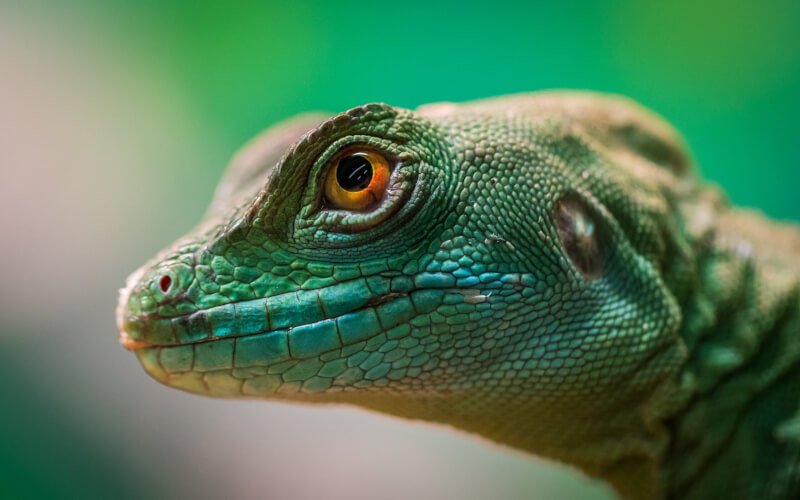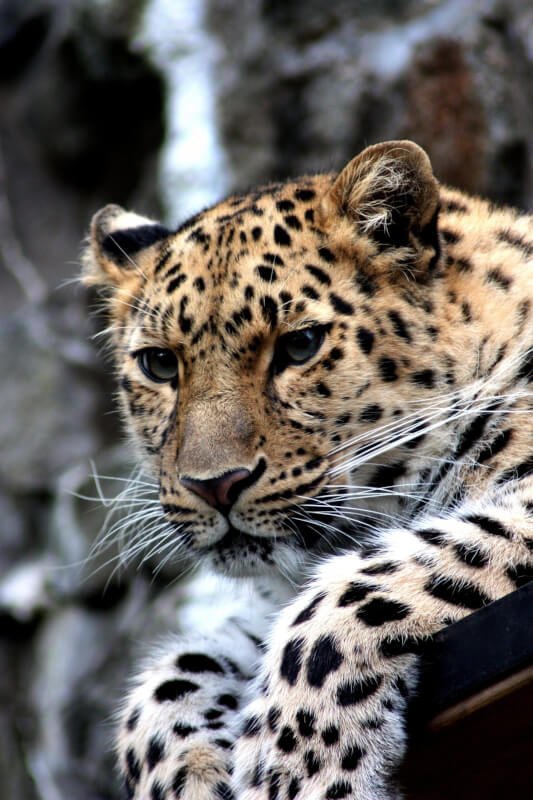Have you ever noticed that your leopard gecko’s tail seems a little thinner than usual? It’s not uncommon for reptile owners to become concerned when they spot changes in their pet’s appearance. However, in the case of a thin tail, there could be several reasons behind it. Understanding the potential factors that may be causing this thinness is crucial in ensuring the well-being of your beloved gecko friend. Let’s explore some of the possible explanations for a thin tail in your leopard gecko and what steps you can take to address the issue.

Overview
Leopard geckos are fascinating creatures with unique features, and their tails are one of the most distinctive aspects of their appearance. Their tails not only add to their beauty but also serve essential purposes for their overall health and well-being. In this article, we will delve deeper into why a healthy tail is important for leopard geckos and explore the causes, signs, and potential treatments for a thin tail. Additionally, we will provide valuable information on how to prevent this condition from occurring in the first place.
Leopard geckos and their tails
Leopard geckos are renowned for their enchanting tails, which store fat reserves and play a crucial role in their survival. These tails act as a reservoir of energy and nutrients, enabling leopard geckos to withstand periods of food scarcity. Furthermore, their tails serve as a means of defense, allowing them to distract predators and detach their tails if necessary. A well-developed tail indicates that a leopard gecko is healthy and thriving. It is important to closely monitor the condition of their tails to ensure their overall wellness.
Importance of a healthy tail
The tail of a leopard gecko holds immense significance in maintaining their overall health. A plump, well-rounded tail indicates that the gecko is receiving proper nutrition and has optimal energy reserves. A healthy tail is essential for successful reproduction, as female leopard geckos utilize their fat stores during the egg-laying process. Moreover, a robust tail indicates that the gecko is thriving in its environment and is better equipped to defend itself against potential threats. Therefore, it is crucial to address any signs of a thin tail promptly to avoid complications and ensure the well-being of your leopard gecko.
Causes of a Thin Tail
A thin tail in a leopard gecko can arise due to various factors. Understanding these causes is vital in order to appropriately address the issue and restore the gecko’s tail to a healthy state.
Insufficient food intake
One of the primary reasons for a thin tail in leopard geckos is insufficient food intake. Geckos that do not receive an adequate amount of the right nutrients may experience weight loss and a decrease in tail fat stores. It is essential to provide a balanced diet comprising of proper quantities of insects and appropriate supplements to meet their nutritional needs.
Parasites
Another common cause of a thin tail in leopard geckos is the presence of parasites. Internal parasites can often lead to malnourishment and weight loss, affecting the health of the tail. Routine fecal examinations and proper parasite prevention measures are crucial to maintaining a healthy gecko.
Stress or anxiety
Leopard geckos are sensitive creatures, and prolonged periods of stress or anxiety can result in weight loss and a thinning tail. Factors such as improper handling, overcrowded enclosures, or sudden environmental changes can trigger stress in these reptiles. Providing them with a calm and secure environment is necessary to prevent such issues.
Illness or disease
Underlying illnesses or diseases can also contribute to a thin tail in leopard geckos. Some health conditions affect their ability to absorb nutrients, leading to weight loss and a decrease in tail fat. Regular health check-ups and prompt veterinary care are essential in identifying and addressing these issues to safeguard the gecko’s well-being.

Signs and Symptoms
Being able to recognize the signs and symptoms of a thin tail is crucial in addressing this issue promptly. By closely observing your leopard gecko, you can identify any potential problems and take appropriate action.
Visible thinning of the tail
One evident sign of a thin tail is a visible decrease in its size and overall plumpness. If your gecko’s tail appears significantly smaller or lacks the usual roundness, it may indicate a problem.
Weight loss
Monitoring your gecko’s weight is important, as weight loss can be an early indicator of a thinning tail. Regularly weigh your gecko using a gram scale to ensure you catch any changes in weight early on.
Lethargy or decreased activity
A lethargic leopard gecko that displays reduced activity levels may be experiencing health issues, potentially leading to a thin tail. Noticeable changes in their behavior and lack of interest in their surroundings should not be ignored.
Decreased appetite
If your gecko demonstrates a significant decrease in appetite or a disinterest in food, it may indicate a problem with their tail health. Appetite loss is often associated with various health issues and should be addressed promptly.
Addressing a Thin Tail
Addressing a thin tail in your leopard gecko requires a multi-faceted approach that focuses on improving their overall well-being.
Improving diet and feeding habits
One of the first steps in addressing a thin tail is ensuring your leopard gecko receives a well-balanced diet. Consult a reptile veterinarian or reptile nutritionist to determine the appropriate types and quantities of insects and supplements to feed your gecko. Regular feedings and a varied diet will help restore tail fat and promote overall health.
Parasite treatment
If internal parasites are contributing to the thinness of your gecko’s tail, it is important to seek appropriate veterinary treatment. A fecal examination can identify the presence of parasites, which can then be targeted with the appropriate medications. Following treatment, maintaining a regular parasite prevention regimen is crucial to prevent reinfestation.
Providing a stress-free environment
Creating a stress-free environment for your leopard gecko is key in promoting tail health. Ensure their enclosure is appropriately sized, well-maintained, and equipped with suitable hiding spots and temperature gradients. Avoid sudden changes in their environment and handle them gently and infrequently to minimize stress.
Seeking veterinary care
If efforts to address a thin tail at home are not yielding the desired results, it is essential to seek veterinary care. A reptile veterinarian can provide a comprehensive examination, determine the underlying cause of the thin tail, and recommend appropriate treatments or interventions.

Preventing Thin Tails
Prevention is always better than cure when it comes to maintaining the health of your leopard gecko’s tail. By implementing these preventive measures, you can reduce the risk of your gecko developing a thin tail.
Proper feeding and nutrition
Providing a balanced diet and meeting the nutritional needs of your leopard gecko is essential in preventing a thin tail. Research and consult experts to ensure you are offering the right types and quantities of food and supplements.
Regular health checks
Routine check-ups with a reptile veterinarian are crucial in detecting any potential health issues early on. Regular examinations can help identify underlying problems that may contribute to a thin tail, allowing for prompt intervention.
Maintaining a suitable habitat
Creating a suitable habitat for your leopard gecko is vital in preventing stress and maintaining overall health. Ensure that their enclosure is appropriately sized, has the correct temperature and humidity levels, and contains appropriate furnishings to meet their behavioral needs.
Conclusion
Understanding the importance of a healthy tail for leopard geckos is vital as responsible pet owners. By recognizing the causes, signs, and symptoms of a thin tail, and taking the necessary steps to address the issue, you can ensure the well-being and longevity of your gecko. By providing appropriate nutrition, a stress-free environment, and maintaining regular health check-ups, you can prevent thin tails and promote the overall health of your leopard gecko. Remember, prevention and proactive measures are key to keeping your gecko’s tail healthy and thriving.



